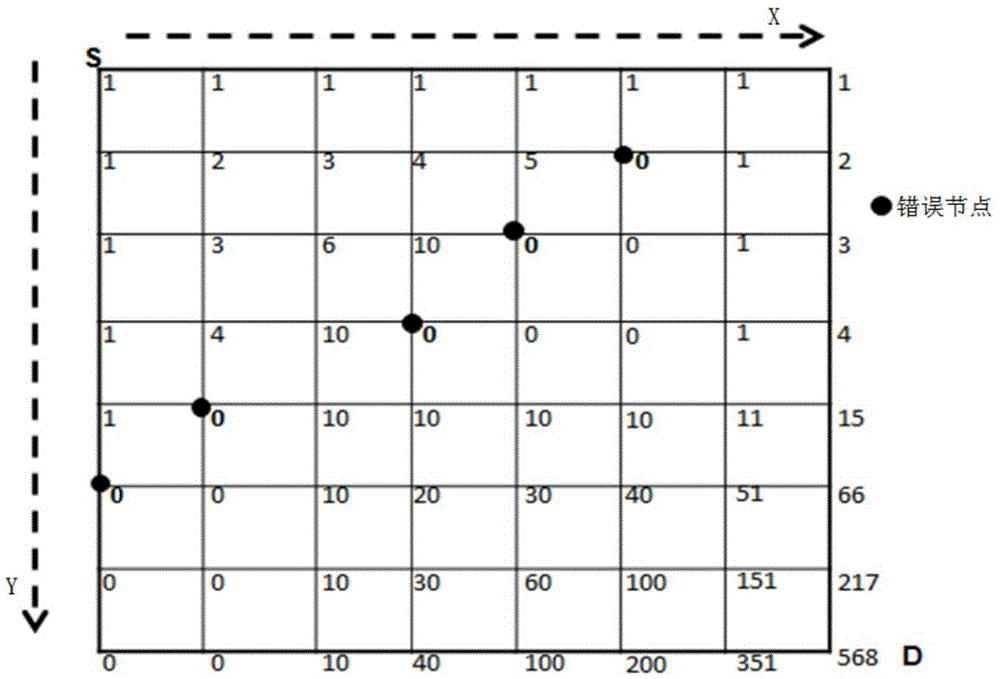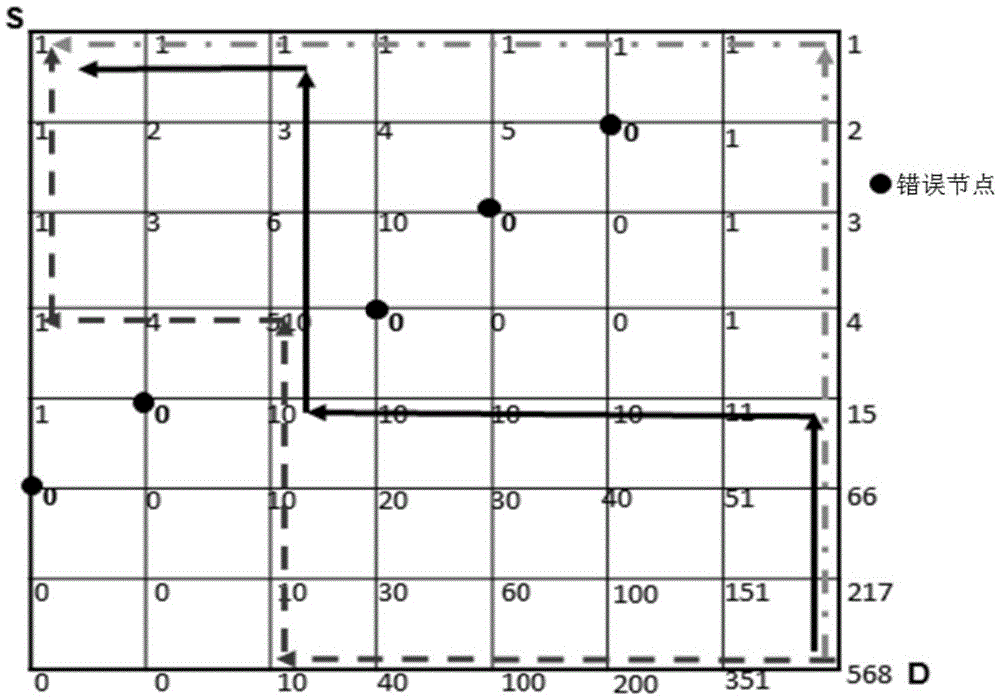Fault-tolerant Manhattan routing method for routing direction monotonous change network
A technology of monotonous change and routing, applied in the direction of data exchange network, digital transmission system, electrical components, etc., can solve the problems of high complexity, complex algorithm, low universality, etc., achieve wide applicability, low complexity, and improve universal effect
- Summary
- Abstract
- Description
- Claims
- Application Information
AI Technical Summary
Problems solved by technology
Method used
Image
Examples
Embodiment 1
[0036] Such as figure 1 As shown, the fault-tolerant Manhattan routing method for a network with a monotonically changing routing direction provided in this embodiment is applied to a 2DMesh network that uses a fully adaptive minimum routing strategy and whose routing direction is monotonically changing. The method includes the following steps:
[0037] S1. Determine whether the source node S and the destination node D are error nodes. If at least one of them is an error node, it means that there is no fault-tolerant Manhattan path between the source node S and the destination node D, and the process ends; if both are not errors node, then go to step S2;
[0038] S2. When the positions of the source node S and the destination node D in the network are known, determine the next-hop node of each intermediate node between the source node S and the destination node D, which is allowed by the minimum routing policy, and record The last hop node of each intermediate node is allowed...
Embodiment example 2
[0088] The fault-tolerant Manhattan routing method for a network with monotonically changing routing direction provided in this embodiment is applied to a 2DMesh network using a partially adaptive minimum routing strategy and the routing direction is monotonically changing. The method includes the following steps:
[0089] S1. Determine whether the source node S and the destination node D are error nodes. If at least one of them is an error node, it means that there is no fault-tolerant Manhattan path between the source node S and the destination node D, and the process ends; if both are not errors node, then go to step S2;
[0090] S2. When the positions of the source node S and the destination node D in the network are known, execute an existing partial adaptive minimum routing algorithm such as partial adaptation based on the odd-even turn model or the negative priority turn model or other turn models The minimum routing algorithm judges the "all next-hop nodes allowed by t...
Embodiment example 3
[0143] The fault-tolerant Manhattan routing method for a network with monotonically changing routing direction provided in this embodiment is applied to a 3DMesh network using a fully adaptive minimum routing strategy and routing direction is monotonically changing. The method includes the following steps:
[0144] S1. Determine whether the source node S and the destination node D are error nodes. If at least one of them is an error node, it means that there is no fault-tolerant Manhattan path between the source node S and the destination node D, and the process ends; if both are not errors node, then go to step S2;
[0145] S2. When the positions of the source node S and the destination node D in the network are known, determine the next hop of each intermediate node (intermediate router) between the source node S and the destination node D, which is allowed by the minimum routing policy node, and record the last hop node allowed by the minimum routing policy of each intermed...
PUM
 Login to View More
Login to View More Abstract
Description
Claims
Application Information
 Login to View More
Login to View More - R&D
- Intellectual Property
- Life Sciences
- Materials
- Tech Scout
- Unparalleled Data Quality
- Higher Quality Content
- 60% Fewer Hallucinations
Browse by: Latest US Patents, China's latest patents, Technical Efficacy Thesaurus, Application Domain, Technology Topic, Popular Technical Reports.
© 2025 PatSnap. All rights reserved.Legal|Privacy policy|Modern Slavery Act Transparency Statement|Sitemap|About US| Contact US: help@patsnap.com



